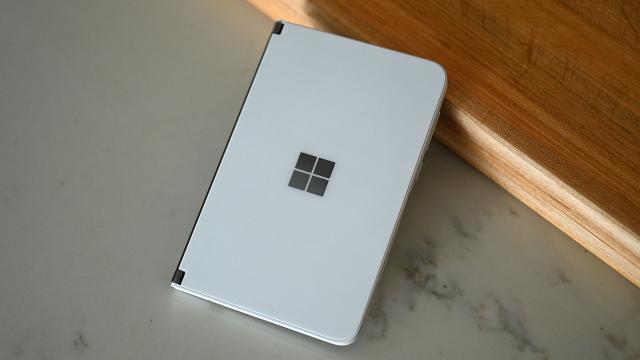Between its price, specs, and most notably its design, Microsoft’s Surface Duo is one of the most divisive phones in recent memory. But after getting the chance to use one, I can’t help but find the amount of vitriol, incredulity, and straight-up hate that gets lobbed the Surface Duo’s way incredibly perplexing.
I mean just think about it for a minute. While they’re not for everyone, when it comes to having two displays connected to a laptop, the advantages are obvious. You get more real estate for various apps, the ability to quickly drag files from one place to another, and powerful multitasking. But for some reason, as soon as you mention the idea of a dual-screen phone, that device becomes a demon, something to be shunned or mocked. This kind of sentiment feels wildly at odds during a time when people’s primary computer is a phone, not a laptop.
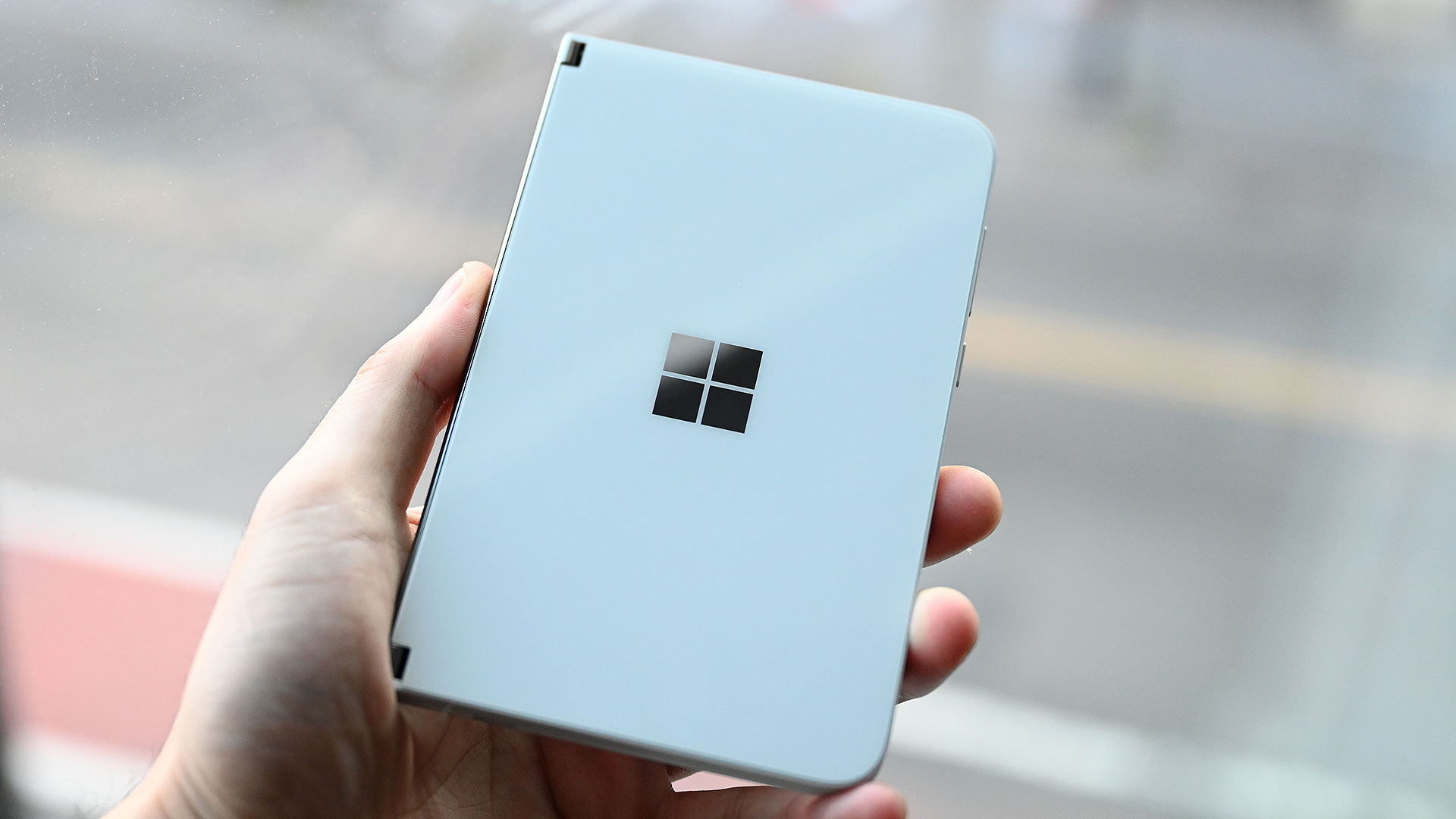
Microsoft Surface Duo
What is it?
A dual-screen phone from Microsoft that runs on Android
Price
$US1,400 ($1,924) (or $US1,500 ($2,061) for 256GB of storage)
Like
Dual 5.6-inch AMOLED displays, strong battery life, beautiful build, innovative design, superior multitasking, the Kindle app, powerful advanced features for Microsoft apps
Don't Like
Very expensive, buggy, weak, awkward camera, mediocre specs for the price, no water resistance, wireless charging, or NFC
That’s precisely where the Surface Duo comes in, because even when compared to previous dual-screen phones like the ZTE Axon M, LG G8X, and others, the Surface Duo feels like the first phone built and designed from the start to support dual displays. However, as the Surface Duo tries to make way for a new category of smartphone, there’s a definite learning curve for Microsoft as both a software developer and a first-time Android handset maker, and also for the user as they try to take advantage of the Surface Duo’s capabilities. It’s not easy, and at some points the $US1,400 ($AUD1,924) Surface Duo feels very experimental. That’s kind of to be expected when a device is trying to start a revolution.
Design: Thoughtful Elegance, Almost to a Fault
For the Surface Duo, so much of the phone’s success is reliant on its design, which only becomes more impressive when you realise how much thought and consideration went into every aspect. Unlike Samsung’s Galaxy Z Fold 2 (which is 16.8mm thick when closed), the Surface Duo has an almost nonexistent gap between its two halves when folded shut, and with each screen measuring just 4.8mm thick (or 9.9mm when closed), the Surface Duo seems impossibly thin, which is just what Microsoft wanted.
Meanwhile, the exterior of the device is practically unblemished, aside from the Microsoft logo embedded within the Duo’s outside glass, a USB-C port along the bottom, a side-mounted fingerprint sensor, and the usual buttons for power and volume.
But what you can’t see on the inside is just as critical, because unlike regular phones, the Surface Duo has duplicate sensors and accelerometers in both halves of the device, allowing the Duo to recognise which “posture” its in, so the phone can react properly to any of its various modes, whether its closed, propped up like a tent, sitting on a table like a mini laptop, or rotated a full 360 degrees so that only one screen is in use.
Furthermore, the Surface Duo feels balanced, almost like a proper chef’s knife, with Microsoft intentionally putting the Duo’s centre of gravity towards the bottom of the hinge when it’s fully open. This means that simply by putting your thumb on the lower hinge at the base of the phone, the Duo rests gently in your hand just like a real book. It feels like the most natural thing in the world.

And then there’s the hinge, which not only features a constant resistance which gives you confidence it can support itself in any position, it also allows for power and data to be transferred from one side of the phone to the other, without any threat of breaking or twisted cables.
Thought’s even been put into the Duo’s dual 4:3 5.6-inch AMOLED displays because while they feel quite wide and somewhat cumbersome compared to the 18:9 or 21:9 screens on so many new phones, that extra width really comes in handy when it comes to general multitasking.
However, all that thinness and sleekness does come with tradeoffs. To keep the Surface Duo that slim, Microsoft had to axe support for NFC, wireless charging, expandable storage, and water-resistance — all things you’d normally get on a phone in this price range. And with only a single camera positioned on the inside of the Duo, using its camera is an unusually complicated process, but more on that in a bit.

Despite the Duo being both tall and wide, its thinness transforms it into an incredibly futuristic, exquisitely crafted device. Microsoft made a point of going this thin for a reason, and it’s something that enhances the experience every time you use it. I just hope that going forward, Microsoft can retain these sleek dimensions (maybe with a small bump up in thickness) while adding back more standard features.
Software: An Evolving Language for the Post Phone era
Billed as the “Microsoft you love with the Android you know” by chief product officer Panos Panay, the Surface Duo’s software hits that mark right on the head. You get many of the familiar Android gestures mixed with the flat, unapologetically boxy UI used in Windows 10. However, to enhance the Duo, Microsoft has also tweaked some things to help evolve Android’s gesture language to better support dual-screen multitasking.

In this way, Microsoft is sort of entering uncharted territory, which means both us and Microsoft (and its partnership with Google) are learning as we go. You can still do things like swipe up from the bottom to go home, but when it comes to swiping in from the sides to go back, that only works on one side. When in dual screen mode, swiping in from the middle of the phone starting at the hinge is not only awkward, it’s hard to do. This means you have to learn where you can and can’t swipe depending how you’re using the Duo, and with some many modes, it can take some getting used to.
Then there are completely new gestures like grabbing the small tab at the bottom of an app and dragging it to the hinge, which allows an app on one side of the phone to suddenly span both displays. Not only does this change the way an app looks and functions, it also gives app developers a new way of designing how an app works, with Microsoft giving apps like Outlook and Powerpoint an enhanced UI to better utilise the Duo’s dual screen nature. This really transforms the way you use apps that actually have this added level of support. The problem is that with the idea of dual screen phones still so new, it’s going to take a while for app makers who aren’t Microsoft to adjust. Aside from a handful of apps like the Kindle app and photo editing app Mylio, only Microsoft’s first-party Android apps really have this type of functionality currently.

There are other new things like being able to simply flick apps from one side of the screen to another with the flick of your thumb. It’s so easy and intuitive, and compared to the dedicated pop-up menus for screen controls used on other dual screen phones from LG and others, it’s much more elegant too. However, with the Duo being the first phone to really need these new gestures and controls, things don’t always work everytime, or work as you expected, which is where the aspect of the Duo’s learning curve comes in. It’s steeper than what you encounter on any other phone. Yet when you get it right, it’s really rewarding.
Multitasking: Perfect for Business, Adaptive Power at Home
To call the Surface Duo’s ability to multitask a strength would be an understatement, it’s basically a completely new experience. That’s because what people consider multitasking on phones today isn’t really multitasking at all. Sure, you might have apps running in the background, but you’re never really doing two things at once. Everything is a series of actions. Say you’re reading a story and you see a juicy quote or a funny meme that you want to share.
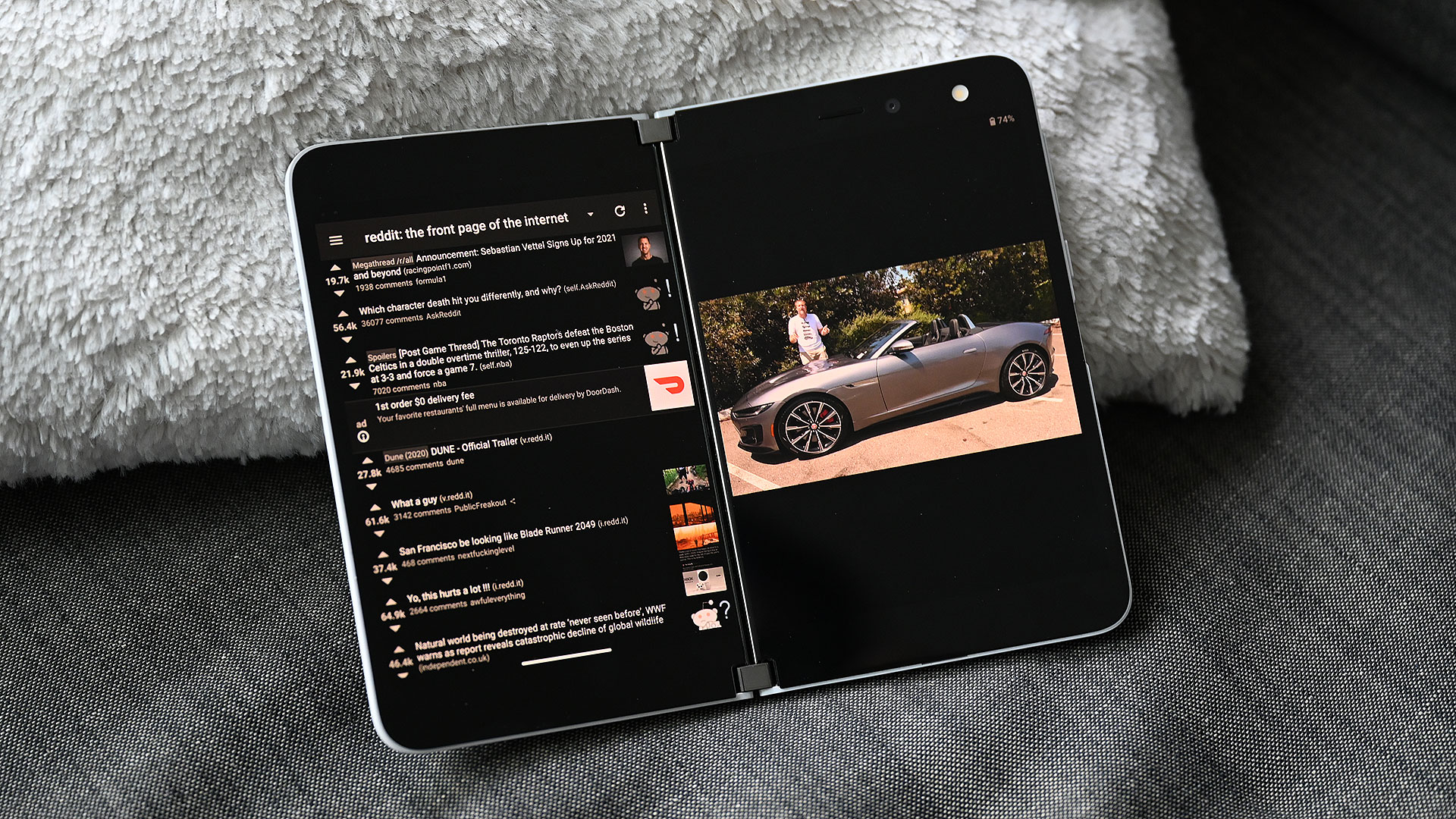
So you highlight the text, copy it, swipe up to go home, tap on your messaging app of choice, paste it in, and hit send. That’s not multitasking, its a series of steps! Or maybe you use an apps built-in share menu, which opens up a tray at the bottom of the phone while the rest of the screen goes dark and sits there unused. The closest thing you can to real multitasking on most single screen phones is stuff like YouTube’s picture-in-picture feature, which lets you watch videos in a minuscule window while you do other stuff.
But on Surface Duo, you can have separate apps open at the same time or launch two apps with a single press using Microsoft’s App Groups feature. And if you’re using one of Microsoft’s 365 apps or Edge, you can even drag and drop text, which feels like a dream come true. You can have Slack open on one screen while you scroll through emails on another, or pull ingredients from a recipe seamlessly into your weekly grocery list. The Surface Duo even has a sort of physicality to its multi-functionality, because, with its ability to transform into a mini laptop, it can prop itself up while you’re cooking, or turn into a mini arcade. And if you simply want to live tweet while you streaming a show on the other screen, the Surface Duo can do that too, better than anything else on the market. It’s multitasking unlike any before that’s come before.
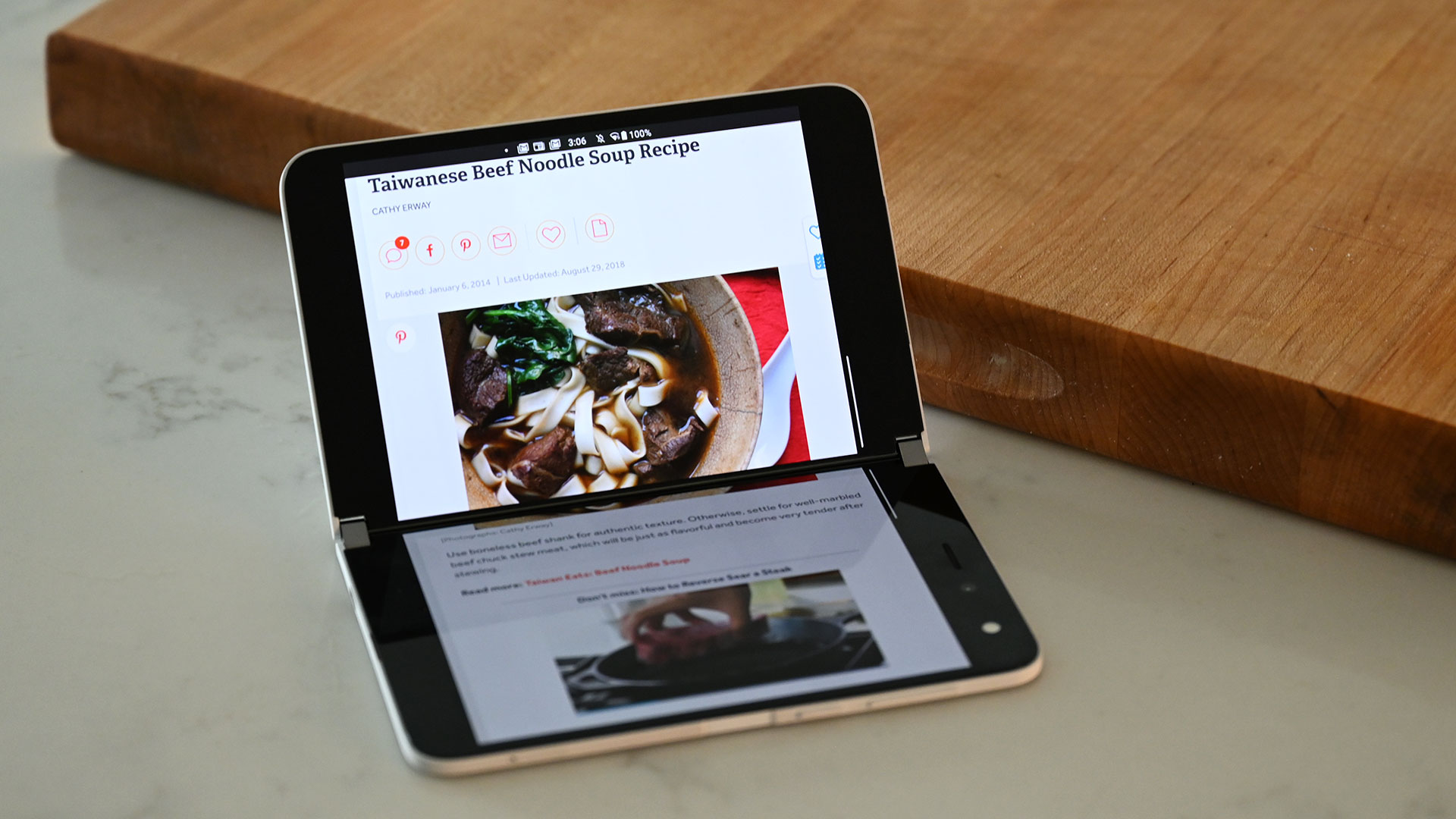
Microsoft even gave the Duo the smarts to know that if you have one app open on the left and nothing on the right (or vice versa) clicking a link will automatically open a new app on the inactive display, so as to maximise all that screen. This opens up the potential for the Surface Duo to be a real creation device. I can be in the process of writing a story on one screen (on a phone which I would normally never even try to do), while I use the other to pull in resources or links without ever having to close or dismiss my current working doc. Multitasking is the real power of the Surface Duo — even if you aren’t using both screens at once all the time at 100%. That’s OK. But for those times when you do need to use two apps side-by-side, just like having dual monitors at your desk, the increased productivity they can provide is undeniable.
Strangely, one thing Microsoft didn’t include is the ability to mirror one display to the other, which would be nice for possibly sharing a video with someone else, or showing them what they look like in real time while posing for a photo. That said, this is one thing that many users have already asked for, and Microsoft is hoping to add in a future update.
Performance: Good, But Could Be Better (and Watch Out for Bugs)
One of the quirks about the Surface Duo is while the phone costs significantly more than an expensive premium phone in 2020 its guts a little underwhelming. With a Snapdragon 855 processor, 6GB of RAM, and 128GB of storage (or 256GB if you pay for the upgrade), the Surface Duo’s specs are closer to what you’d get on a high-end phone in 2019. In fact, aside from having slightly less base storage (just 64GB), those are exactly the same specs you got on a Google Pixel 4.
That’s not to say the Surface Duo is hitting the streets with completely outdated specs, but there is a performance gap of around 15 to 25% in tests like WebXPRT 2015, Geekbench 5, and others between the Surface Duo and current 2020 flagship phones. And when you add in the small overhead required to power two screens instead of phones, you get a phone that usually feels snappy, but often isn’t as smooth or stutter free as you like.
Now some of this is sure to be addressed by patches and software optimisations that Microsoft will deliver down the line, as even prior to its official release, Microsoft pushed out an update that significantly improved stability and responsiveness. But there are bugs, quite a few in fact, and they aren’t hard to find.
Even if you account for user error stemming from having to learn and internalise Microsoft’s new language for manipulating dual screen apps, there are still a lot of situations where the Surface Duo’s screen rotates seemingly at random (or doesn’t rotate at all), doesn’t respond to swipes, or causes apps to hang or crash. Sometimes, the Surface Duo’s wallpaper would simply disappear until the next time I restarted the phone, and while playing Gunbound, I even ran into a weird bug that caused my homescreen to merge with the game’s background, which caused shadowy app icons to show up inside the game.
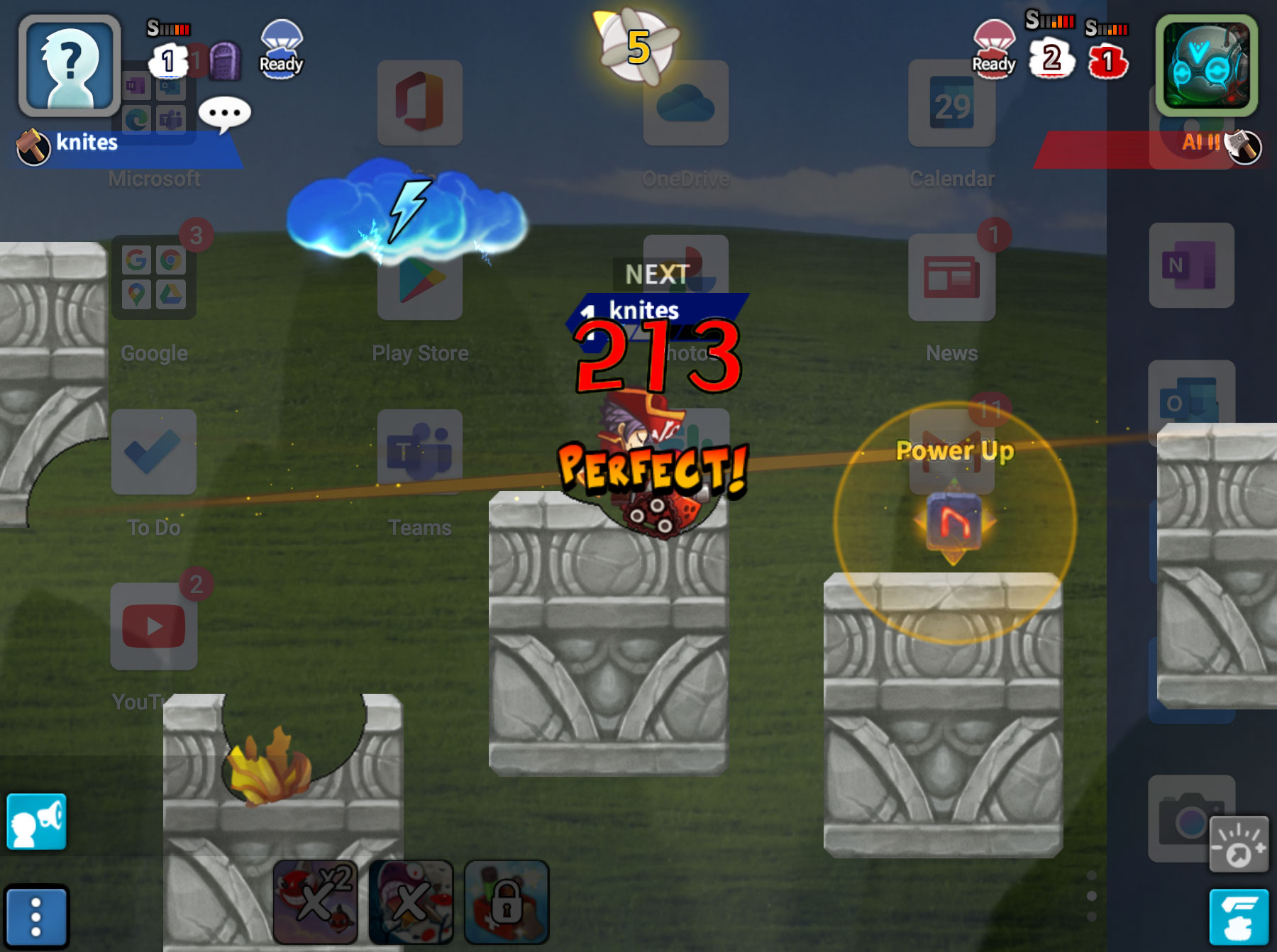
But perhaps the most frustrating bug I encountered was in the Kindle app, where the apps special dual-screen UI that simulates a real book would work, then not work, then work again seemingly without any rhyme or reason. To me, most of these bugs were minor annoyances. I wish they weren’t there, but I’m willing to live with them to try out a phone with some aggressive aspirations. But at the same time, I can’t fault anyone who doesn’t want to encounter them at all, especially during those times when all you want to do is grab the Duo and unwind by reading a book.
Camera: The Surface Duo’s Blind Spot
Look, there’s no getting around it, Surface Duo’s camera experience is simply the weakest part of the device. Now I will admit that by putting the Duo’s camera just above its right-side display, it’s relatively easy to use when taking selfies or making video calls. But for everything else, the Duo’s lone camera is often awkward to use and captures potentially disappointing photos — especially in low light.
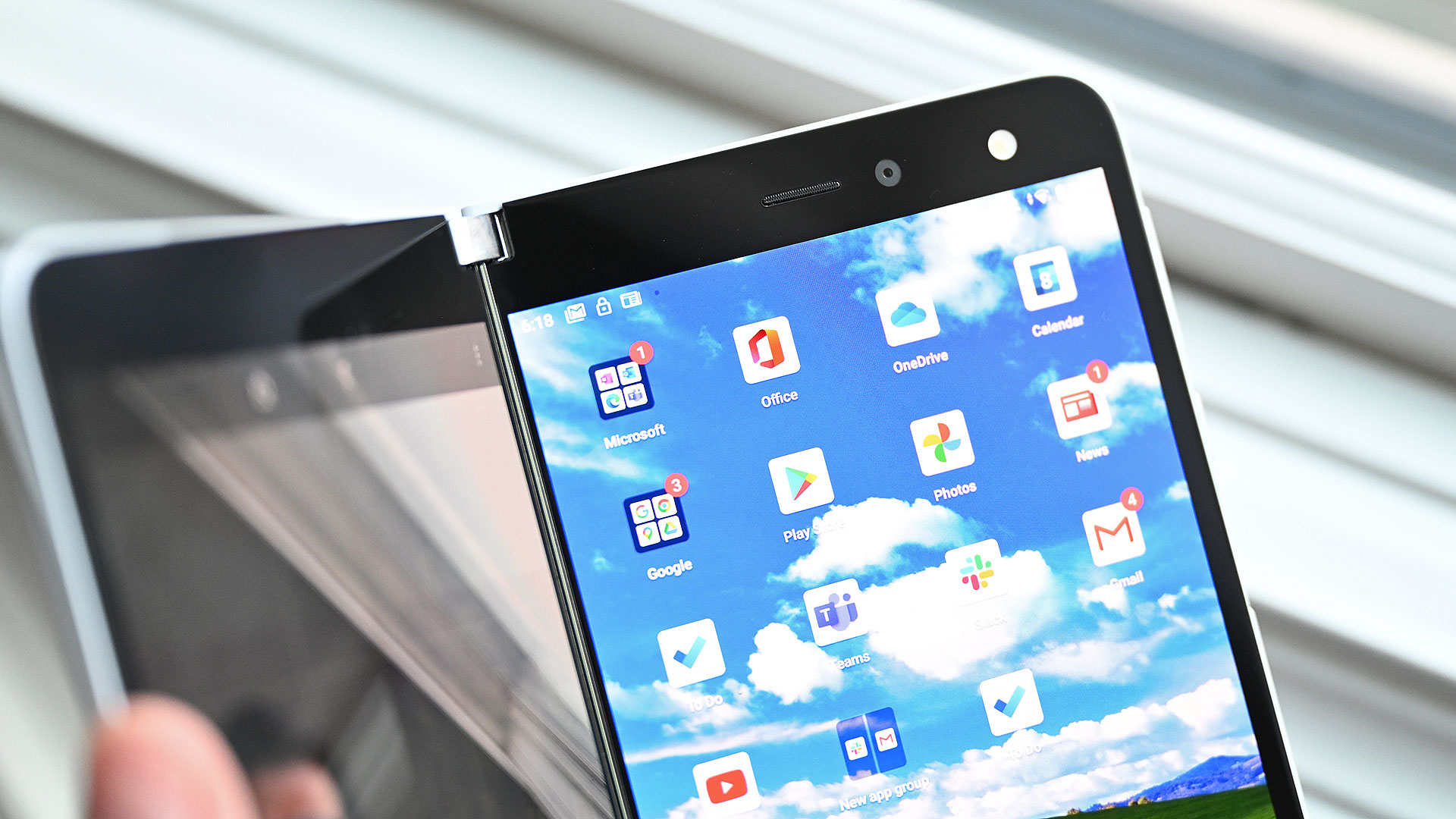
To start, before you even get to tap that shutter button you’ll need to open the phone all the way, open the Camera app so it’s in selfie mode, AND THEN rotate the Duo like you’re doing a backslide flip on a skateboard, so that the camera which normally points towards you now faces away. And during that last part, you have to hope that the Duo’s internal accelerometers recognise the motion, because there isn’t a dedicated button for telling the Camera app to switch from one side of the phone to the other.
All told, it’s a pretty lengthy and cumbersome process, and while you do start to learn how to rotate the Duo to get it to do what you want, the Duo still misses from time to time. And if you’re someone who likes to snap quick pictures of a pet or child, this setup means you’re simply going to miss some shots that you would have been able to capture on another phone.
But what’s even more concerning is the quality of the photos the Duo produces. Like most phones nowadays, in well lit conditions, the Surface Duo is an adequate shooter, though it lacks the kind of sharpness and saturated colours you’d normally get from a premium phone. Without a dedicated zoom lens, trying to push in with the Duo’s 11-MP camera results in rather flat looking photos that become pixelated quite quickly. However, when the lights go down, the Surface Duo’s image quality degrades fast, resulting in soft, dark, and grainy photos.
In a nighttime shot looking out at NYC, even without Night Sight enabled on a Pixel 4 XL, the Surface Duo struggled to gather enough light and produced a noisy image with little in the way of sharpness. And with the Night Sight turned on, it really feels like the Surface Duo’s camera is years behind Google’s 2019 flagship. Results like this occurred regularly in low light, with Samsung’s Galaxy Z Fold 2 soundly trouncing the Surface Duo in a shootout of a skate park at night and a neighbourhood book drop. The photos aren’t even close, and when you look at the Z Fold 2’s pics and see the multiple light sources nearby, it’s kind of distressing.
In fact, the Surface Duo’s low light photos are so bad, instead of comparing it to other premium phones, I ran another nighttime test pitting the Duo against a $US250 ($AUD344) budget handset in the Moto G Power. And you know that, the Duo lost that battle too. In a head-to-head faceoff capturing images of graffiti, a nearby path, and a random flower, the Duo couldn’t keep pace with the G Power, turning in pics that were generally darker, grainier, and less detailed than the Moto. The Surface Duo’s best performance was in the shot of the flower, where at best, it produced a photo that was slightly sharper, but had a worse exposure.
As someone who back in April said it was too early to nitpick the Surface Duo’s cameras, now that I’ve had a chance to check out examples from an actual retail device instead of early pre-product teases, it’s official: the Duo’s camera just isn’t good. This is something Microsoft needs to address in future models if the Duo line has any dreams of seeing mainstream success, and while I love the sleekness that you get from not having any cameras on the exterior of the Duo, I just don’t think that’s a feasible tactic.
Battery Life: Solid in any position
For such a thin device with two screens to power and manage, the Surface Duo has surprisingly strong battery life. With just one screen active, the Surface Duo lasted 12 hours and 31 minutes on our video rundown test, just five minutes shy of the Pixel 4 XL’s mark of 12:36. And with both screens in use, while Duo took a small hit to longevity, for what effectively amounts to a 8.1-inch display, a time of 11 hours flat ain’t bad.
The Future: Taking the Leap from One Screen to Two
The Surface Duo is an incredibly difficult device to review. On one hand it’s a dual-screen Android phone that people can simply go out and buy. But on the other, the Surface Duo is a gadget that’s trying to lead by example, showing other device makers and users alike what’s possible on this new class of phone.
That said, that $US1,400 ($AUD1,924) price tag almost immediately rules out most people, particularly anyone who still doubts the power and potential of having two screens on a phone or can’t deal with bugs. This Surface Duo is for people who have dreamed of having real multitasking on a phone, and are willing to put up with growing pains to experience that for themselves. There’s little excuse for a phone this expensive to have image quality this bad, which is why it’s so important for anyone considering the Duo to know what they’re getting into.

At the same time, even with its flaws, the Surface Duo is already an incredibly powerful business phone. It’s almost perfectly designed to allow employees to do things like check emails while simultaneously viewing their calendar to make sure they aren’t about to miss a meeting. This goes double for any company that’s already invested in Microsoft’s 365 suite, whose mobile apps have been optimised for the Duo.
But the biggest impact of the Surface Duo is serving as an example of why having two screens on a phone can be just as powerful as having two screens on a PC. Honestly, it’s kind of surprising it’s taken this long for something like the Surface Duo to appear. This is Microsoft trying what it did when it created a new category of devices with the original Surface. It’s not perfect, but the revolution is here.
README
- Microsoft has taken smartphone multitasking to a new level with the Surface Duo, but there’s a definite learning curve.
- The Surface Duo doesn’t come with a stylus, but it does support pen input via any of the currently available Surface pens.
- The Surface Duo’s camera has poor image quality and it’s quite awkward to use to capture anything that’s not a selfie.
- Even with its bugs, the Surface Duo feels like the first phone that was actually designed from the start to support two screens.
- Some of the Surface Duo’s advanced dual-screen features like Span and drag and drop can feel like a revelation when you use them, but currently, many of these features are limited to first-party Microsoft apps.
- The Surface Duo doesn’t have NFC, wireless charging, water-resistance, or a headphone jack, but the phone does come with an included bumper case.
